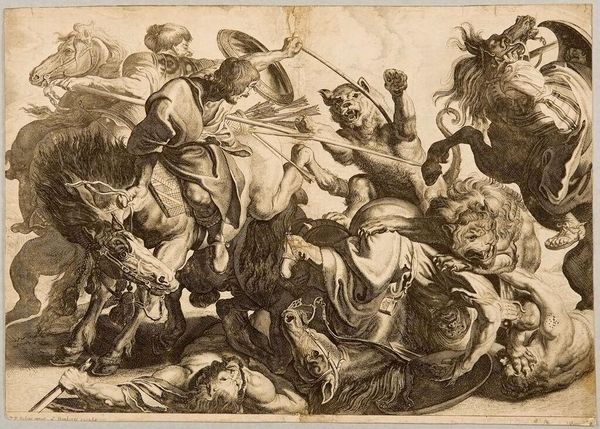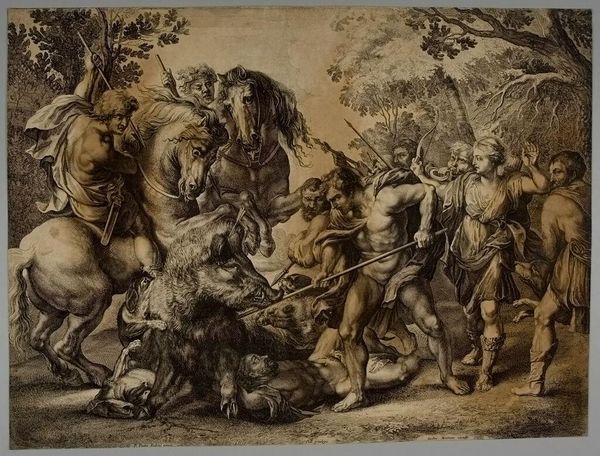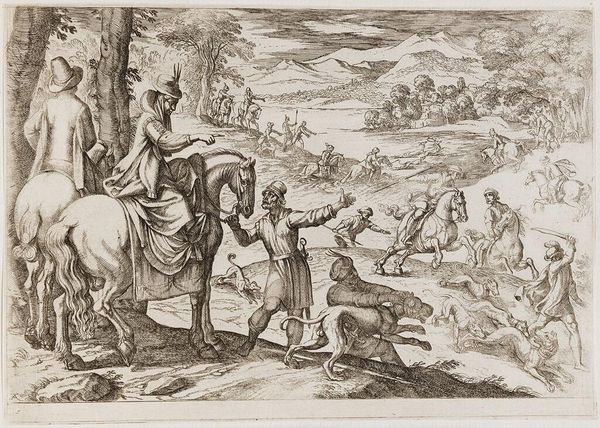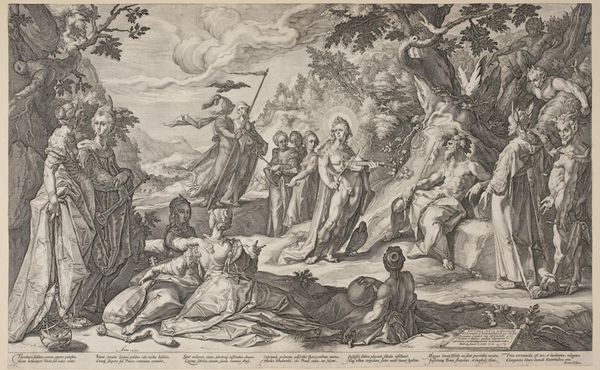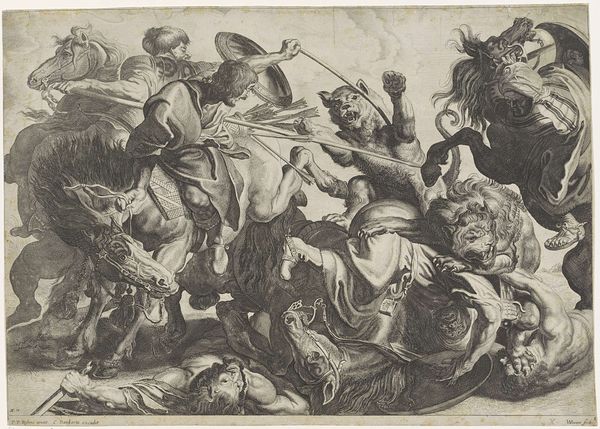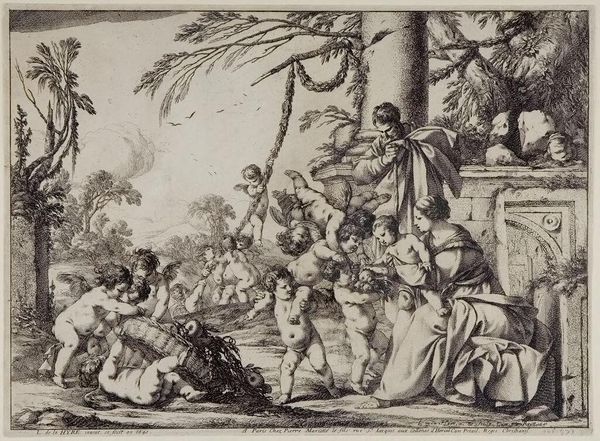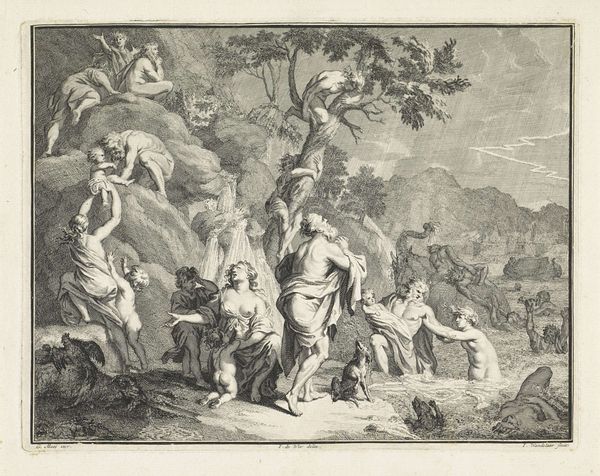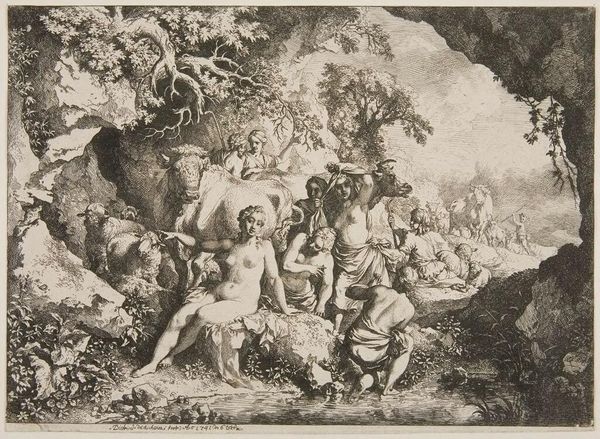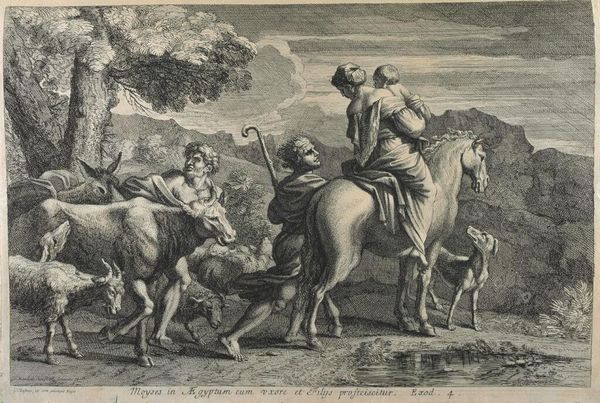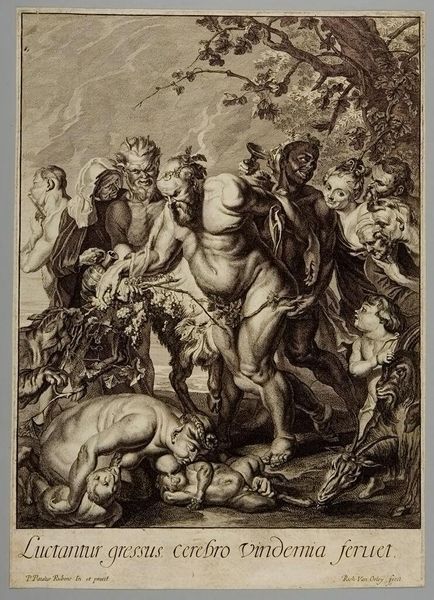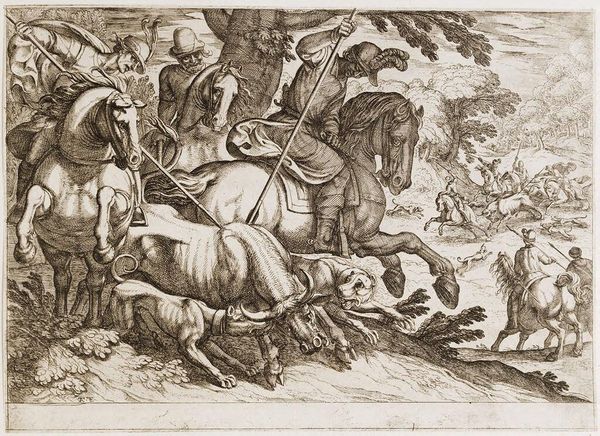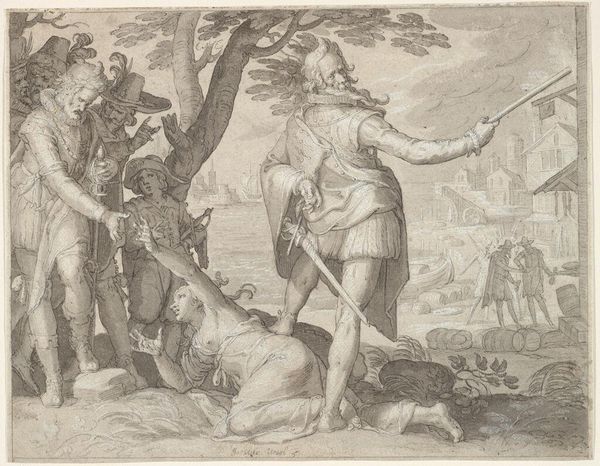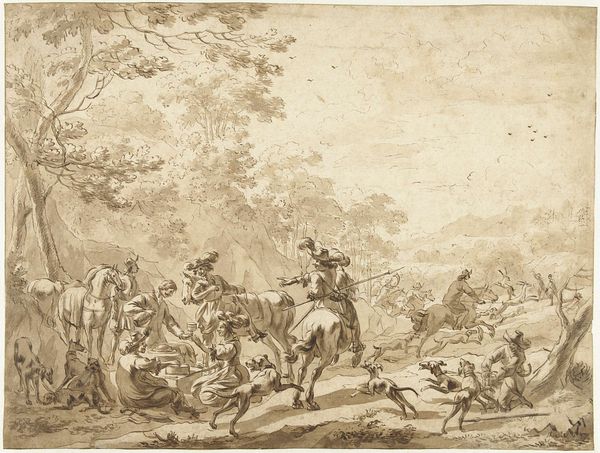
Dimensions: Sheet: 28.8 Ã 42 cm (11 5/16 Ã 16 9/16 in.)
Copyright: CC0 1.0
Curator: It's a chaotic scene—dark, dramatic. So many figures intertwined. Editor: Indeed. What we're looking at is Louis Surugue's "Wild Boar Hunt," currently residing at the Harvard Art Museums. Surugue lived from 1686 to 1762, a period where hunting scenes were popular, often reflecting power dynamics. Curator: It definitely feels like a performance of power. The central figure with the bow—is that meant to be a specific person, or more of an allegorical figure? Editor: It's likely a reference to classical mythology, perhaps a Diana figure, given the huntress imagery. The wild boar itself was a symbol of untamed nature, something to be conquered. The composition subtly reinforces a gendered relationship to nature, where male authority prevails. Curator: And what about the dogs? They are also active participants. Editor: Yes, the dogs' participation in this "hunt" emphasizes the human relationship with animals, displaying the control humans have over nature. This engraving acts as both a hunting scene and a broader comment about our role in nature. Curator: Thanks. I now see how this image reinforces dominant power structures and the assumed right to control nature. Editor: Exactly, seeing art in this wider context allows us to explore it more deeply.
Comments
No comments
Be the first to comment and join the conversation on the ultimate creative platform.
